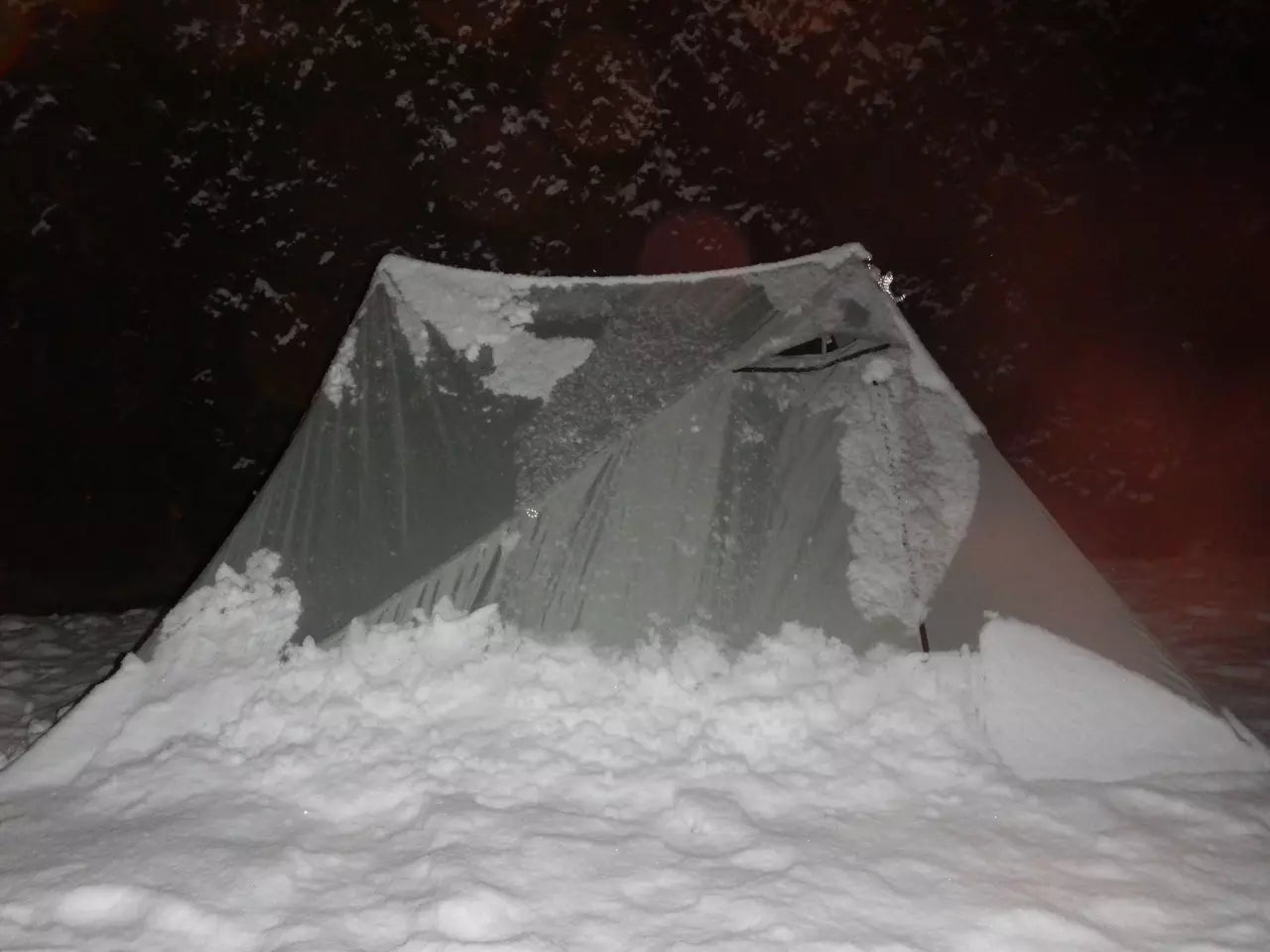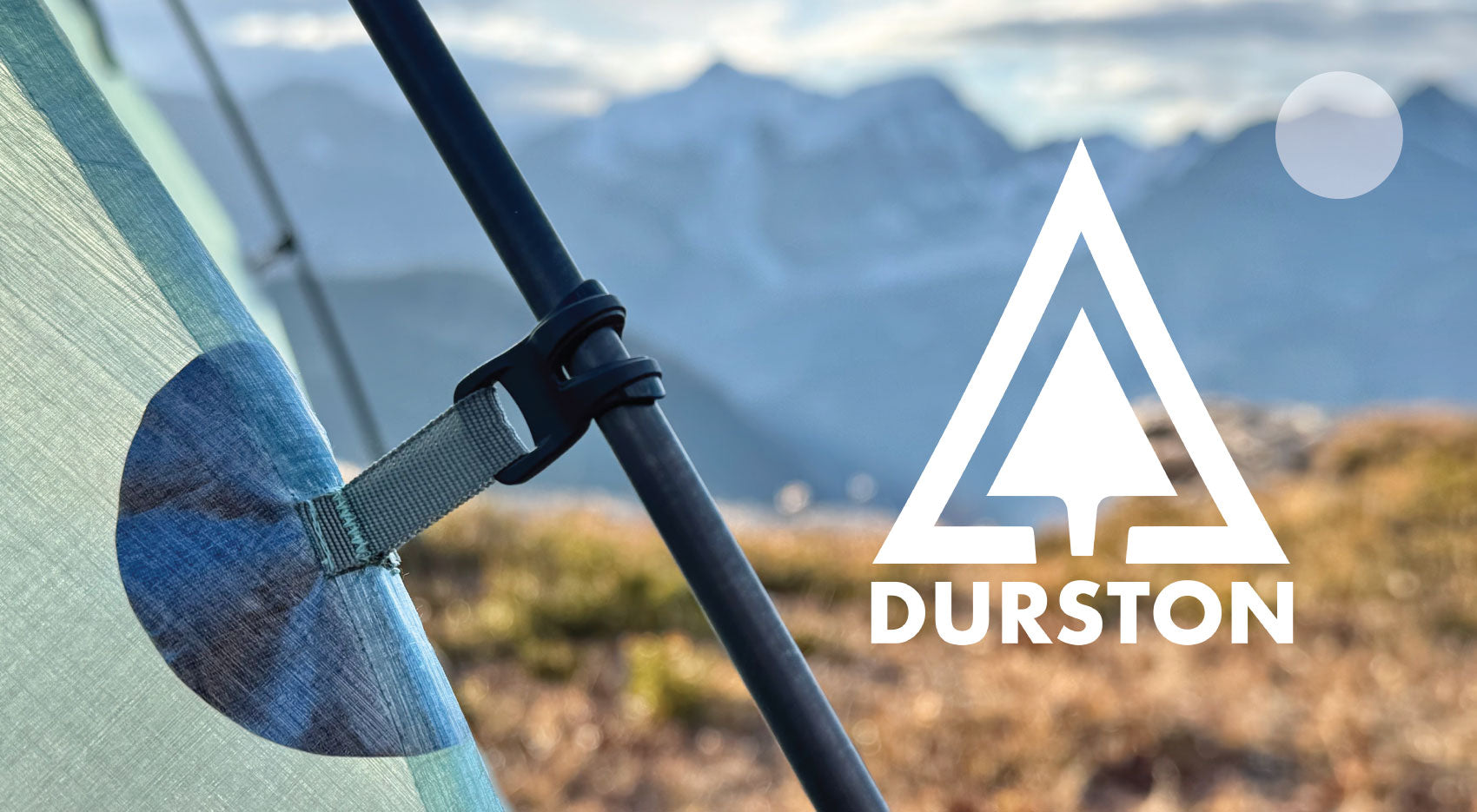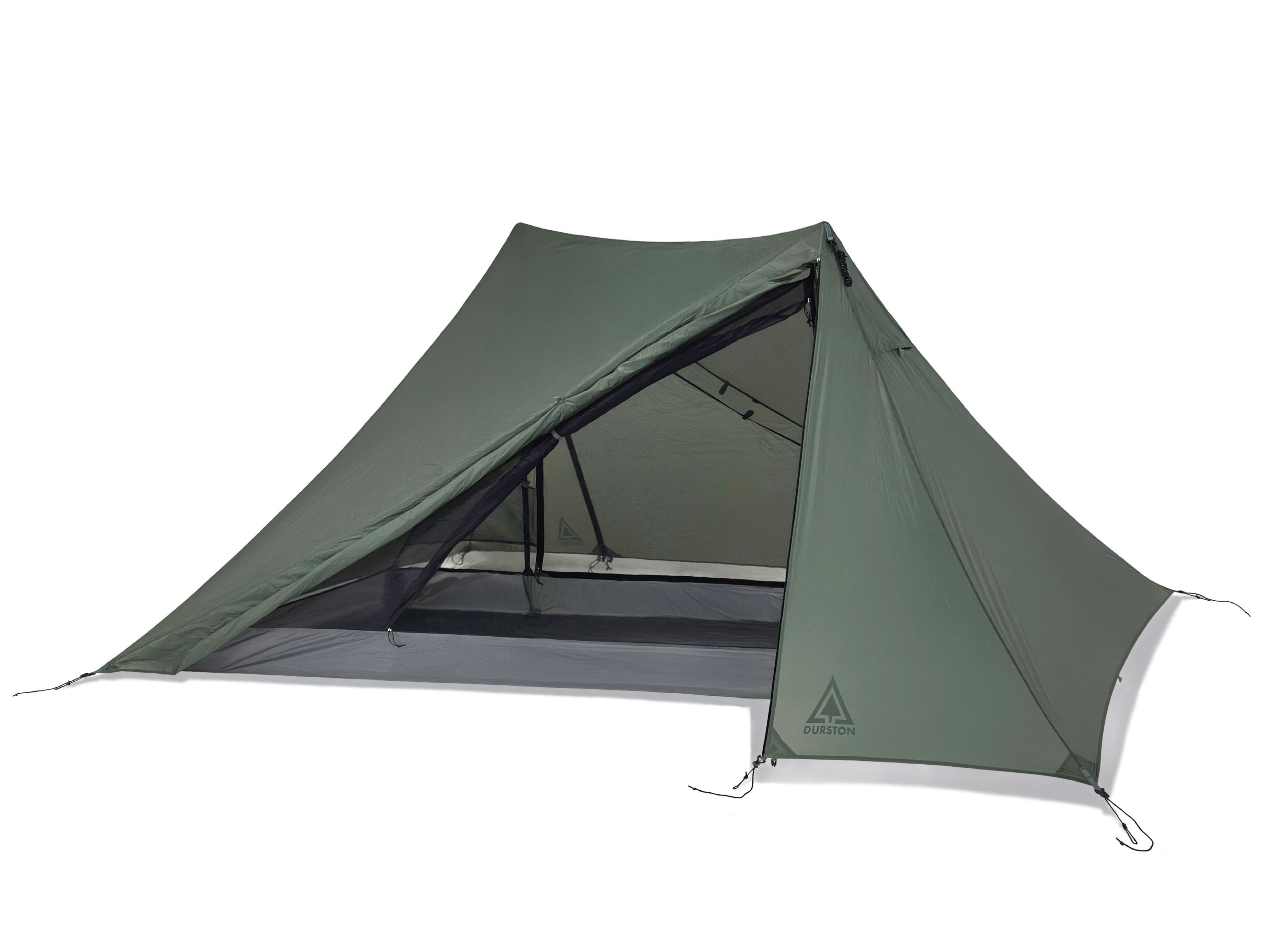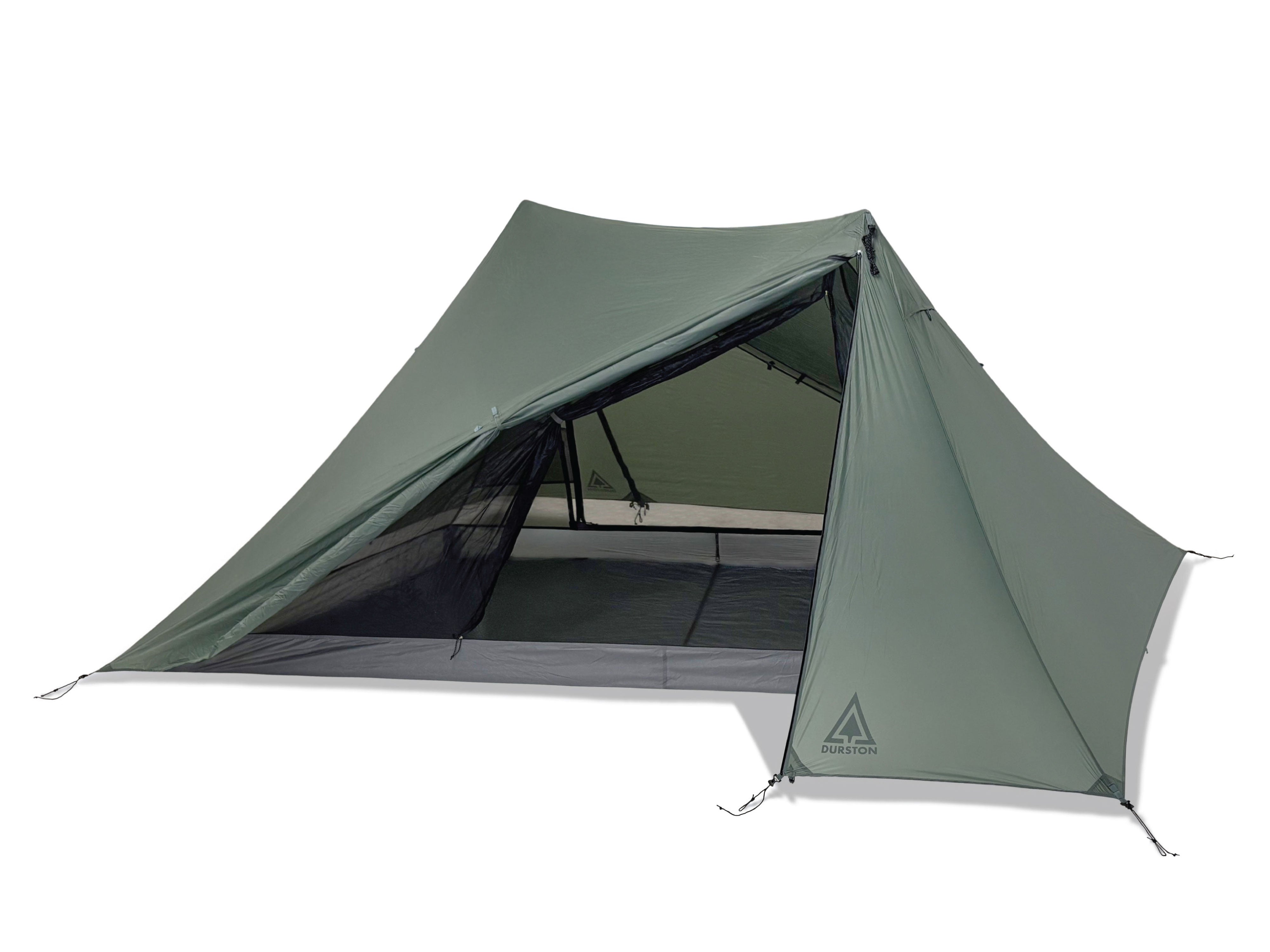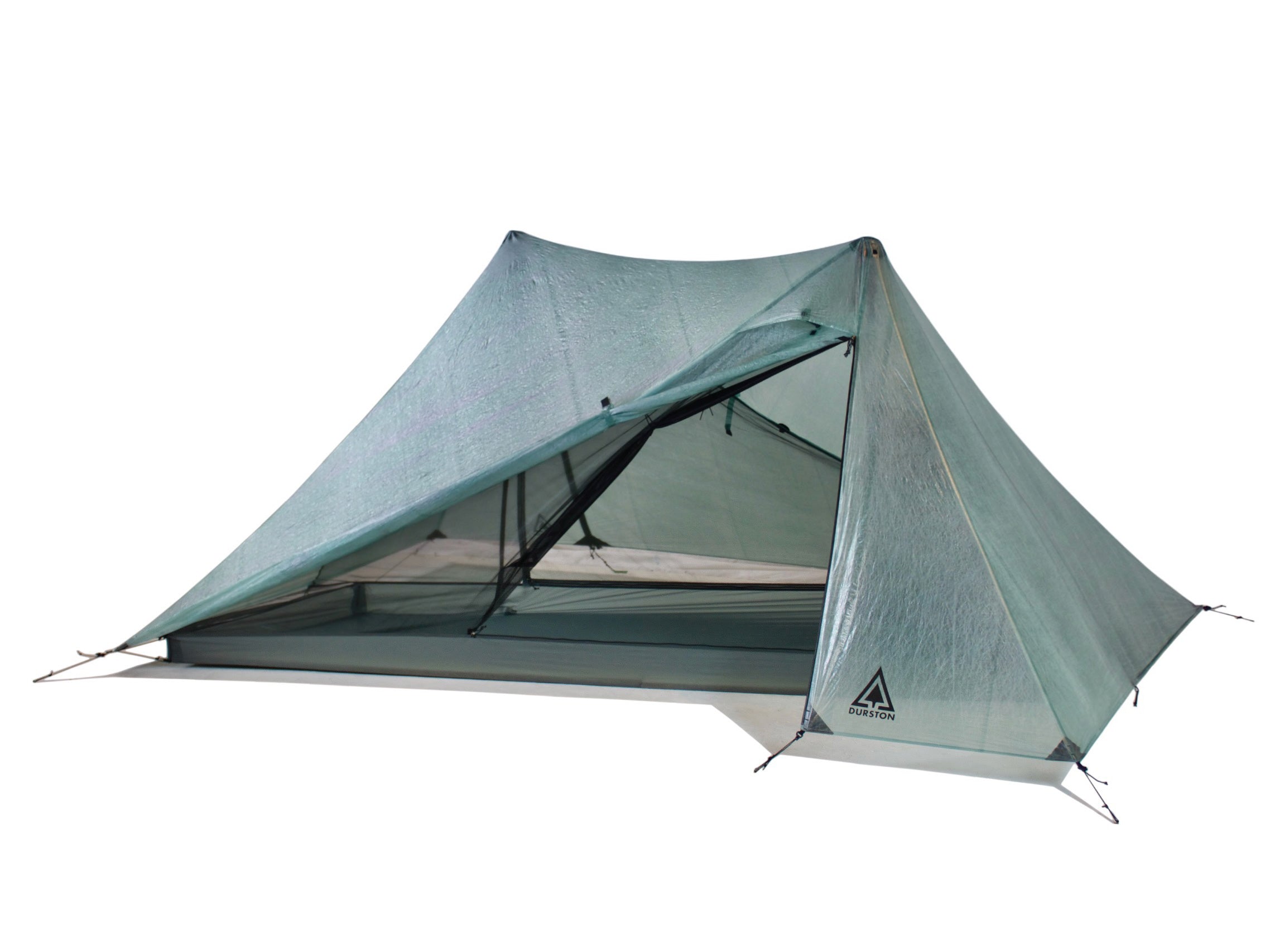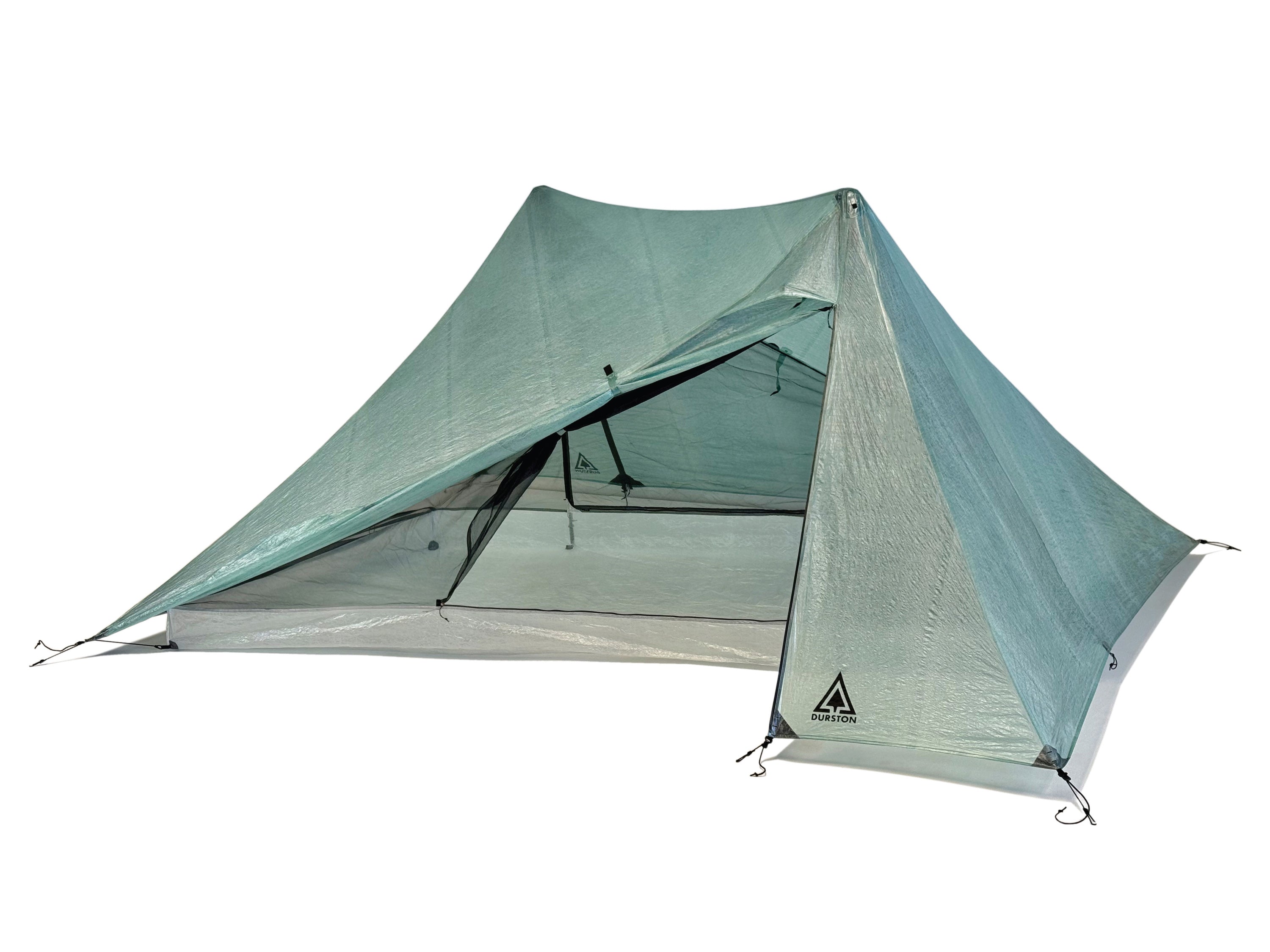X-Mid Geometry Concept
Trekking pole shelters save weight by repurposing the trekking poles that you may be carrying anyways, but they often suffer from a long list of downsides such as a more complicated pitch, poles blocking the doorways, mandatory guylines, and a lack of living space. The goal with the X-Mid was to find a simple solution to solve these problems in order to create a better trekking pole shelter (one that offers more functionality, space, simplicity and storm resistance at a lower weight).
The most fundamental – and thus first – design question was: What shape should form the tent’s base? Most trekking pole tents are based around hexagons or even more complicated shapes, but as the number of sides increases so does pitch complexity and weight. Typically pitching these complex tents require estimates of stake locations, angles, distances between stakes, measuring pole lengths, and estimating pole positions. That can be fun in the backyard but not in a rainstorm. The X-Mid eliminates almost all of this guesswork by opting for a rectangle base – by far the simplest shape to stake out.
The challenge with the rectangle – and reason why it hasn’t been used more historically – is that it’s hard to implement a good trekking pole structure. Most prior rectangle-based tents have been single-pole pyramids, which have a single pole near the center and are lauded for their simplicity and stormworthiness but lack headroom since the sole high point is occupied by the pole. This central pole typically interferes in the living space and doorway. Other rectangle based designs have placed two poles along the perimeter, such as the classic A-frame ("pup tent") design. This increases living space but positioning the poles along the perimeter creates flat walls which catch wind and require guylines and additional stakes. It’s also a more boxy shape and thus an inefficient use of fabric, and the poles interfere in the doorways.
Reasoning from first principles, it was obvious that the ideal tent should use a simple rectangle base plus two poles to bolster living space (since hikers commonly have two poles on hand anyways) but how to achieve this while avoiding all the aforementioned problems was a major design challenge. This challenge resonated in my head throughout my 2600 mile PCT thru-hike in 2014 and again during my 1400 mile Great Divide Trail thru-hike in 2017 until finally I realized a solution to all of these long-standing issues with the patented X-Mid layout:
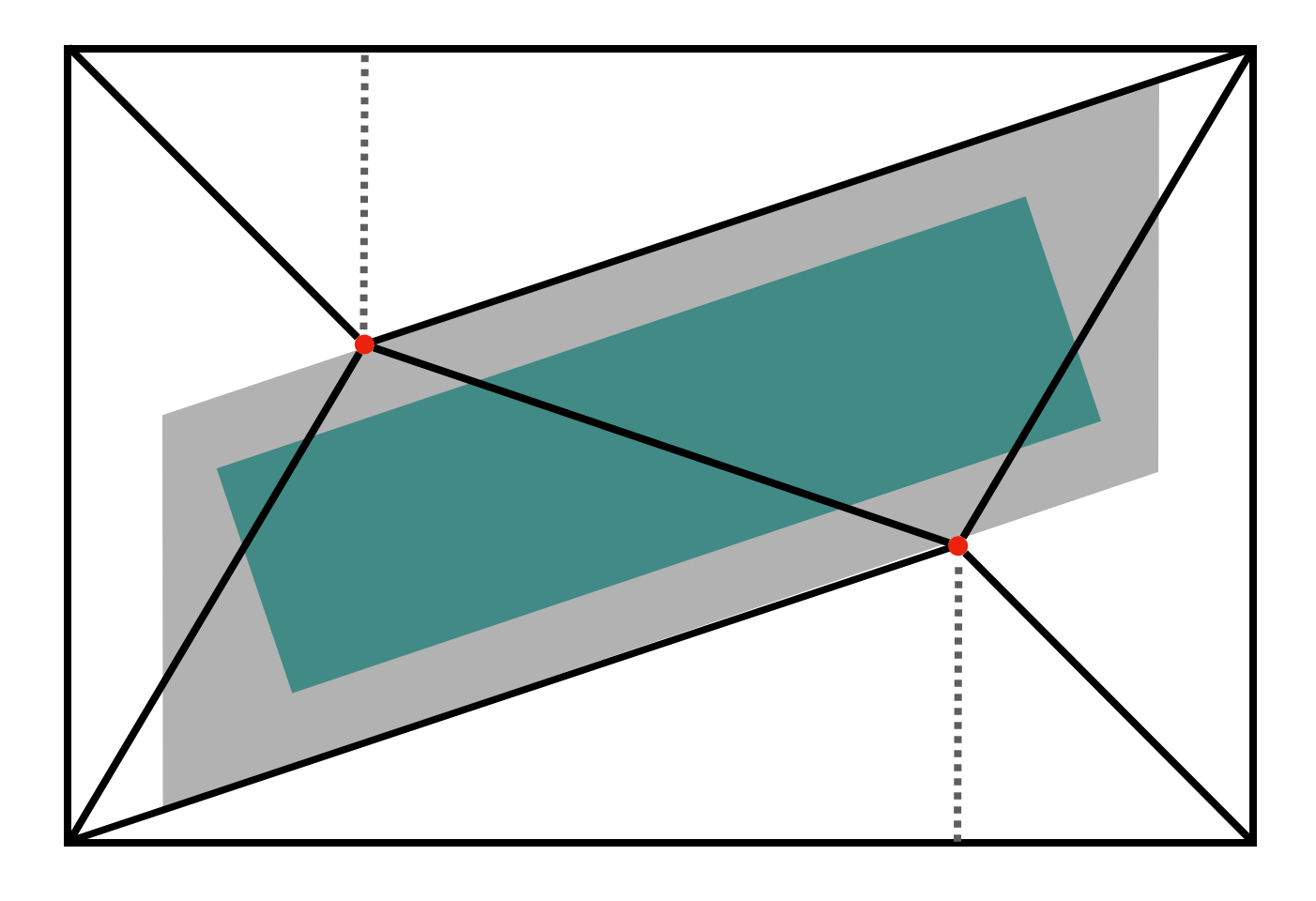
The X-Mid layout starts with the unique idea of placing the sleeping area on a diagonal inside of a rectangular fly (something no other tent has done). This creates vestibules on both sides that conviently have the main area beside the doors instead of blocking them. The diagonal floor also allows for two trekking poles to be located inward from the perimeter so the tent can pitch solidly without any required guylines. Positioned on a crossing diagonal like this, the poles provide abundant space while staying out of the way and not complicating the pitch. It’s a spacious and simple shelter that pitches easily with only 4 stakes and avoids all of the common problems. The floor further has a novel parallelogram shape to maximizes the available floorspace (also unprecedented in the history of tent design). This parallelogram floor is like a rectangle but adds triangles at two opposite corners for gear storage.
The X-Mid geometry is also lightweight because it is the most volumetrically efficient shape for a trekking pole shelter. If you do the math, you’ll find any other comparably sized trekking pole shelter uses more fabric, stakes, or both, resulting in a heavier geometry. Any other tent as light as the X-Mid is either much smaller, using more delicate fabrics, or quite a bit less featured. With our X-Mid Pro series (which focuses more on lightweight materials and uses a singlewall/hybrid construction) we have achieved the some of the worlds lightest tents that provide a capable shelter for under 1 lbs (450g).
The X-Mid also provides outstanding performance in stormy conditions. When it’s rainy, the X-Mid is as good as it gets due to the fly first pitch, protected doorways, generous living space, large vestibules with space for cooking and wet gear, no-sag fabric (polyester), fully taped seams, a double-wall design that protects from contact with condensation, and large vents that open and close easily to reduce condensation. No other tent can claim that entire list (If you know otherwise, contact us and we’ll change this).
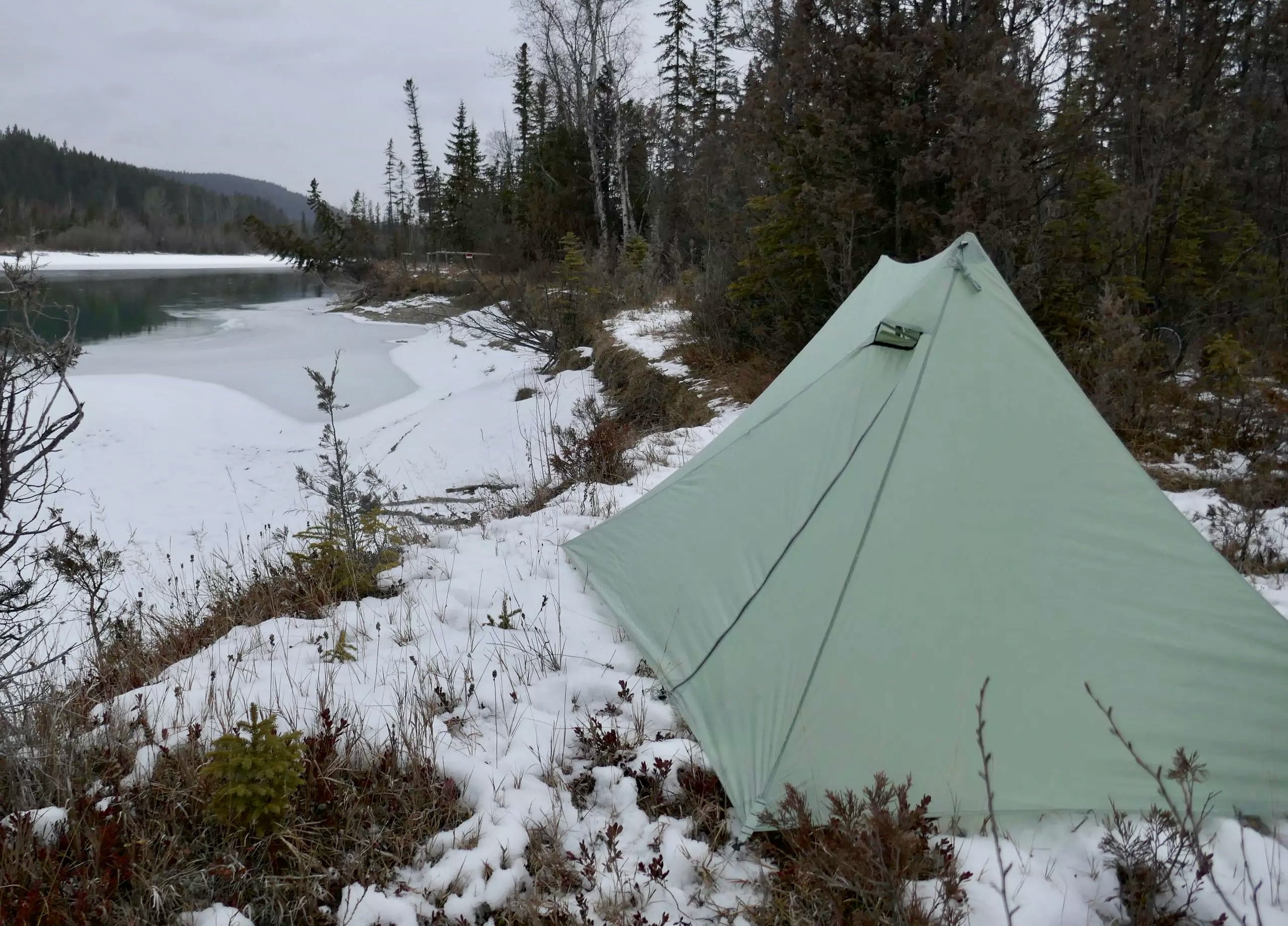
The X-Mid is also stable in the wind and snow due to the weather-resistant shape, durable materials, and additional guyout options. Unlike most tents, the X-Mid geometry provides wall slopes that are both consistent and moderate. Most tents have quite variable wall slopes such that there are usually low angled roof panels that accumulate snow yet steep sides that catch the wind. The X-Mid is rare in having consistent panel slopes, and importantly they are all at a moderate angle, which balances performance in the wind and snow. In addition to this high-performance shape, the tent also buttons down solidly in harsh weather with numerous optional stake out points around the base, vents that quickly shut to block wind and snow, and peak guylines that can be deployed to strengthen the shelter further.
Overall, the X-Mid layout is the ideal design for a trekking pole shelter because it is maximally simple, spacious, and lightweight while solving the common problems with trekking pole shelters.
